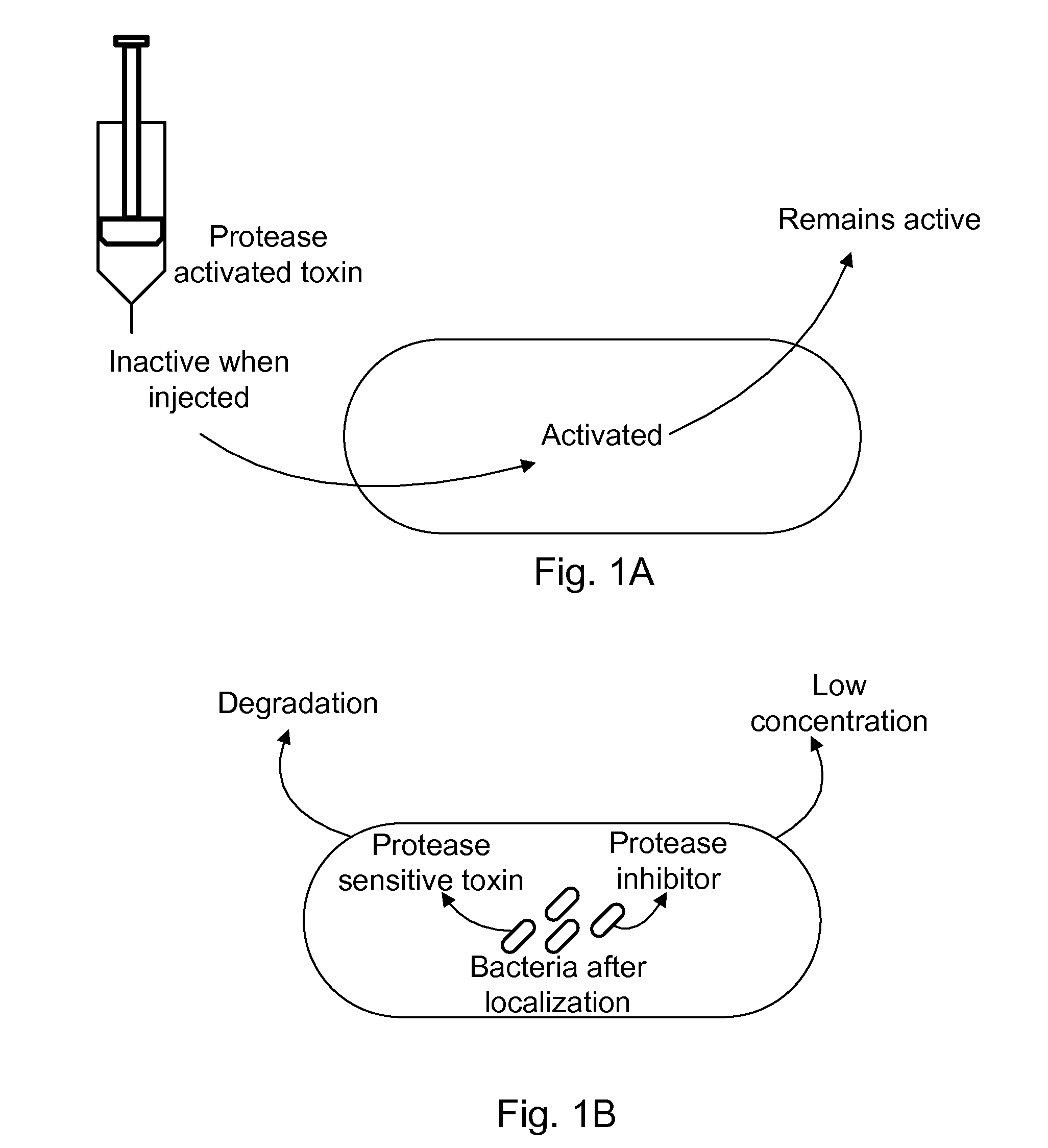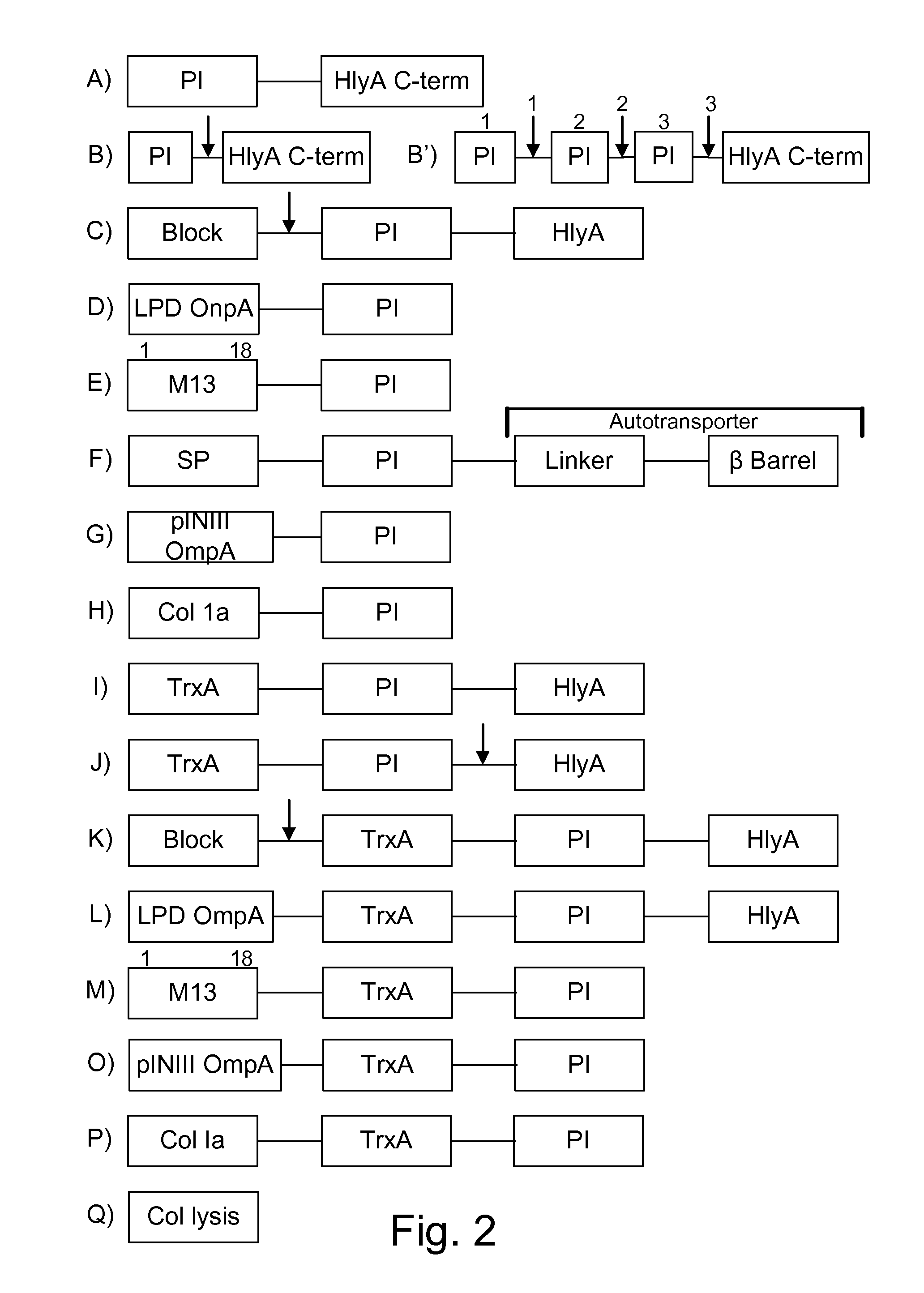Protease inhibitor: protease sensitivity expression system composition and methods improving the therapeutic activity and specificity of proteins delivered by bacteria
a protease sensitivity and expression system technology, applied in the direction of specific cell targeting fusions, peptide sources, applications, etc., can solve the problems of antibody linked to proteinaceous toxins with limited clinical success, dose-limiting toxicity, and off-target toxicity, etc., to achieve better therapeutic effect, prophylaxis or treatment of neoplastic diseases, the effect of improving the therapeutic
- Summary
- Abstract
- Description
- Claims
- Application Information
AI Technical Summary
Benefits of technology
Problems solved by technology
Method used
Image
Examples
example 6
8.9 Example 6
Expression of a C-Terminal Amidating Enzyme Required to Post-Translationally Modify Gastrin and Bombisin Targeting Peptides
[0198]A C-terminal amidating enzyme composition known form serum or plasma which comprises a C-terminal amidating enzyme capable of amidating a C-terminal glycine which amidates the carboxy terminus of the C-terminal glycine of a peptide terminating in Gly-Gly. The enzyme participating in such amidation is called peptidylglycine-α-amidating monoxygenase (C-terminal amidating enzyme) (EC.1.14.17.3) (Bradbury et al, Nature, 298, 686, 1982: Glembotski et al, J. Biol, Chem., 259, 6385, 1984; and U.S. Pat. No. 5,354,675, expressly incorporated herein by reference), is considered to catalyze the following reaction:
—CHCONHCH2COOH—CHCONH2+glyoxylic acid
[0199]is produced by the recombinant.
8.10 Example
Expression of Antitumor Lytic Peptides
[0200]Examples of antitumor lytic peptides are shown in FIG. 5. It is understood that those peptides utilizing the hlyA s...
PUM
| Property | Measurement | Unit |
|---|---|---|
| osmotic pressure | aaaaa | aaaaa |
| length | aaaaa | aaaaa |
| concentration | aaaaa | aaaaa |
Abstract
Description
Claims
Application Information
 Login to View More
Login to View More - R&D
- Intellectual Property
- Life Sciences
- Materials
- Tech Scout
- Unparalleled Data Quality
- Higher Quality Content
- 60% Fewer Hallucinations
Browse by: Latest US Patents, China's latest patents, Technical Efficacy Thesaurus, Application Domain, Technology Topic, Popular Technical Reports.
© 2025 PatSnap. All rights reserved.Legal|Privacy policy|Modern Slavery Act Transparency Statement|Sitemap|About US| Contact US: help@patsnap.com



